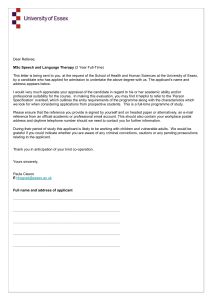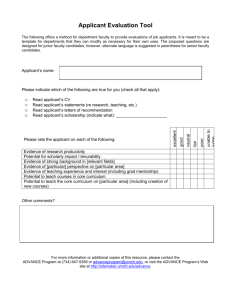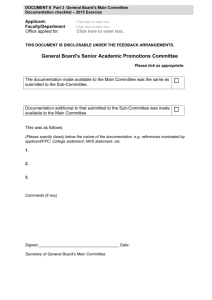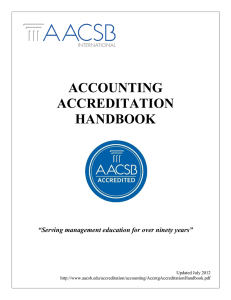Excerpt from the AACSB`s “Initial Accreditation Handbook”, July 2010
advertisement
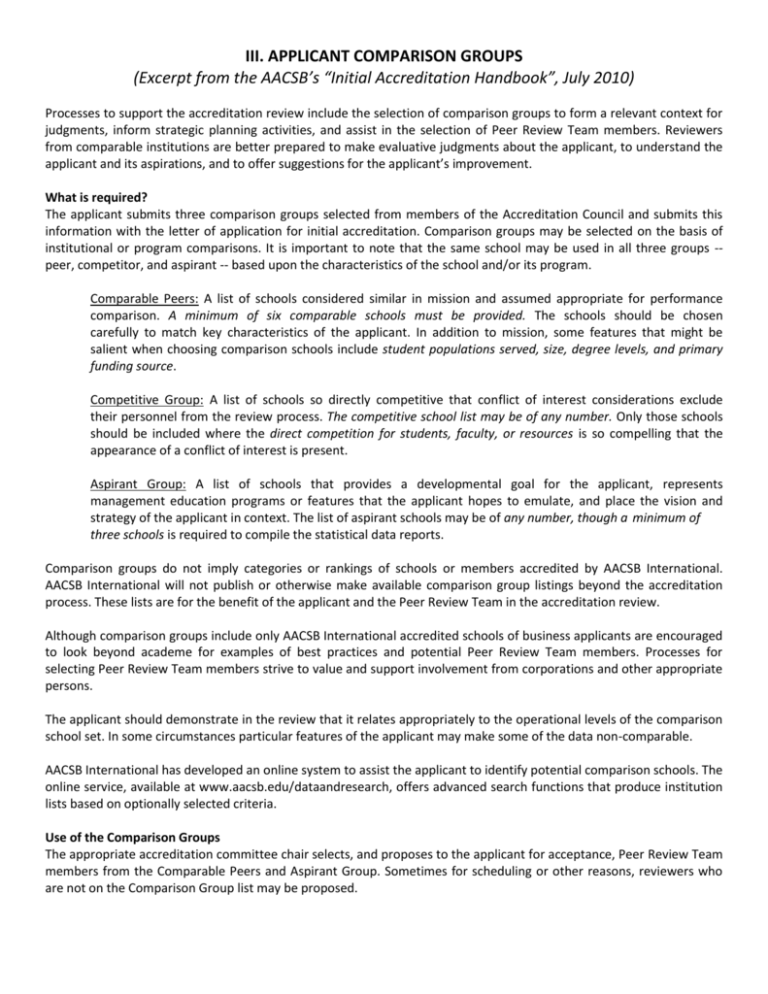
III. APPLICANT COMPARISON GROUPS (Excerpt from the AACSB’s “Initial Accreditation Handbook”, July 2010) Processes to support the accreditation review include the selection of comparison groups to form a relevant context for judgments, inform strategic planning activities, and assist in the selection of Peer Review Team members. Reviewers from comparable institutions are better prepared to make evaluative judgments about the applicant, to understand the applicant and its aspirations, and to offer suggestions for the applicant’s improvement. What is required? The applicant submits three comparison groups selected from members of the Accreditation Council and submits this information with the letter of application for initial accreditation. Comparison groups may be selected on the basis of institutional or program comparisons. It is important to note that the same school may be used in all three groups -peer, competitor, and aspirant -- based upon the characteristics of the school and/or its program. Comparable Peers: A list of schools considered similar in mission and assumed appropriate for performance comparison. A minimum of six comparable schools must be provided. The schools should be chosen carefully to match key characteristics of the applicant. In addition to mission, some features that might be salient when choosing comparison schools include student populations served, size, degree levels, and primary funding source. Competitive Group: A list of schools so directly competitive that conflict of interest considerations exclude their personnel from the review process. The competitive school list may be of any number. Only those schools should be included where the direct competition for students, faculty, or resources is so compelling that the appearance of a conflict of interest is present. Aspirant Group: A list of schools that provides a developmental goal for the applicant, represents management education programs or features that the applicant hopes to emulate, and place the vision and strategy of the applicant in context. The list of aspirant schools may be of any number, though a minimum of three schools is required to compile the statistical data reports. Comparison groups do not imply categories or rankings of schools or members accredited by AACSB International. AACSB International will not publish or otherwise make available comparison group listings beyond the accreditation process. These lists are for the benefit of the applicant and the Peer Review Team in the accreditation review. Although comparison groups include only AACSB International accredited schools of business applicants are encouraged to look beyond academe for examples of best practices and potential Peer Review Team members. Processes for selecting Peer Review Team members strive to value and support involvement from corporations and other appropriate persons. The applicant should demonstrate in the review that it relates appropriately to the operational levels of the comparison school set. In some circumstances particular features of the applicant may make some of the data non-comparable. AACSB International has developed an online system to assist the applicant to identify potential comparison schools. The online service, available at www.aacsb.edu/dataandresearch, offers advanced search functions that produce institution lists based on optionally selected criteria. Use of the Comparison Groups The appropriate accreditation committee chair selects, and proposes to the applicant for acceptance, Peer Review Team members from the Comparable Peers and Aspirant Group. Sometimes for scheduling or other reasons, reviewers who are not on the Comparison Group list may be proposed.

